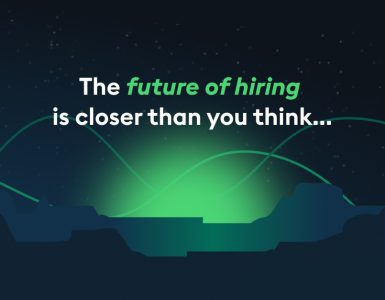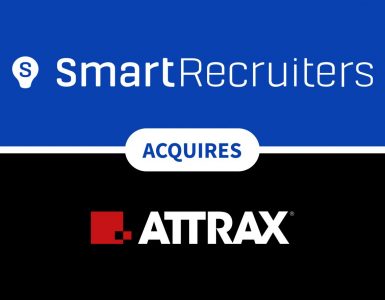There’s a lot of advice out there about how startups and entrepreneurs should hire fast and fire fast. Fundamentally, I think this is backwards, but I am not surprised by this advice for a few different reasons.
First, the very nature of startups, as many in the industry define them, is high speed growth. When you’re really on fire you have virtually no choice but to hire fast to keep up with the growth. Along with this need for speed is the idea that everything should be done quickly. How will you go form $0 to $1 billion in five years if you’re not super fast?
Second, advisors, pundits, and senior executives love to look at firing as a test of a manager. How can you show that you’re tough without firing someone? How can you show that you can make important decisions? Many times in my career I have been advised, ordered, or encouraged to fire someone and I have also seen this happen to many other managers. In my experience, executives ask subordinates to do the firing because they don’t have the guts to do it and prefer to delegate it. The advisors or investors who make these remarks do not bear any of the consequences of a firing—they only bear limited benefits. So, “fire fast” is a cheap way out.
Third, hiring the right person is hard. If you meet a potential hire online, you talk to them (in person or over the phone?) for maybe an hour or two, check their resume, have some other people talk to them and make a decision. How can you possibly evaluate their skills in that time? It’s easier to just say “Hire fast, fire fast until you get the right mix.”
I have three big problems with this approach:
- It’s unfair to your employee who is fired
- It’s unfair to your other employees
- It generally ignores switching costs
When you hire someone, they are under the full belief that a) they will be at the job for at least one year and b) they will be the ones who decide to leave. People often leave higher paying jobs, stability, and a reputation when they leave a job for a startup. So if you, as an entrepreneur, make the mistake of hiring wrong and then decide to fire them, they have to find their way back to the right place.
Hiring is about personal relationships and company culture. With respect to the team you have (and are keeping), you are asking them to integrate someone and then let go of them. The employee has to be trained (which your team probably does) and people want to get along with their coworkers, so investments are made in friendships and getting to know each other. “Firing fast” gives your remaining employees the impression that you don’t mind being unfair to people – and they may infer that means them, too.
Finally, you ignore switching costs with respect to training and workgroup harmony. As a corollary to the training factor, it takes investment to bring people on: to teach them your systems, any job-specific tasks, and more. Interns aside, I estimate it takes 8-12 weeks to get anyone employee past the investment curve and fully productive. If you fire them in 90-120 days you’ve wasted half of your time (and presumably they didn’t even produce what you expected in the second half of that time, since you fired them.) As you continue to change the team around, it creates problems for the team within itself to get work done. Roles and responsibilities become unclear.
It’s been almost two years since we made our first hire. We have six full time employees, plus the two co-founders. We haven’t had to fire anyone.
Our first employee landed in our lap. He sought us out before we even had funding and I didn’t know who we would hire or what our plan was. Our first in person meeting was three months before we made an offer. We knew that our first hire would be a critical person both in terms of work to be done, as well as setting culture, so we were lucky to have a good excuse (no funding) to drag out the process. My co-founder and I both had meals with this employee and many conversations. The time taken paid off—once we closed the first part of our round, we made an offer, negotiated quickly and got him on board.
Our second hire was also slow. We didn’t have the same luxurious excuse of non-funding and we had already been searching around for this position for more than a month when we first received his resume. We kept coming up with excuses to drag it out for a week or speak again. We were very concerned about how he would fit in, because he is a quiet guy and the three of us are, well, opinionated. What we learned in the slower back-and-forth and from the previous month of talking to other candidates was that employee #2 was going to be a great fit. He has turned out to be a far more capable employee that even in our highest hopes.
Sometimes you can get worn down by the process and want to just hire somebody. One of our critical early positions was hard to hire for and we went through dozes of resumes and interviews. We talked about just hiring someone to get someone in the door, but we persevered for another few weeks and found the ideal candidate. This employee has been way more versatile than imagined and touches almost every product we work on. The wait has paid off many times over.
We’ve hired through a recruiter, we’ve hired out of our networks, and we’ve hired when people cold e-mailed us. There is no one panacea to finding the right person, but we have developed a great process for understanding attitude and aptitude, as both are critical factors. I have hired at least a dozen people in my career in various jobs and interviewed dozens more on committees. I like to think that I am starting to understand what works for me as a manager and for Wallaby as a team.
Because we hire slowly, we have a team that knows each other really well. They get along, they know each other’s strengths and weaknesses, and they are super effective. There is a saying in software development that one good engineer is worth three bad engineers. I know we have a team of great engineers and that because of how they work together, we are fast, effective, and making wonderful progress with double-digit monthly growth and revenue in hand.
In the end, you have to build a team that works for you, but for us, we like to build it slowly so that we can operate faster in the long run.
 This article was written by Wallaby CEO Matthew Goldman from Forbes and was legally licensed through the NewsCred publisher network. Learn more about SmartRecruiters, your workspace to find and hire great people.
This article was written by Wallaby CEO Matthew Goldman from Forbes and was legally licensed through the NewsCred publisher network. Learn more about SmartRecruiters, your workspace to find and hire great people.
![]()





























